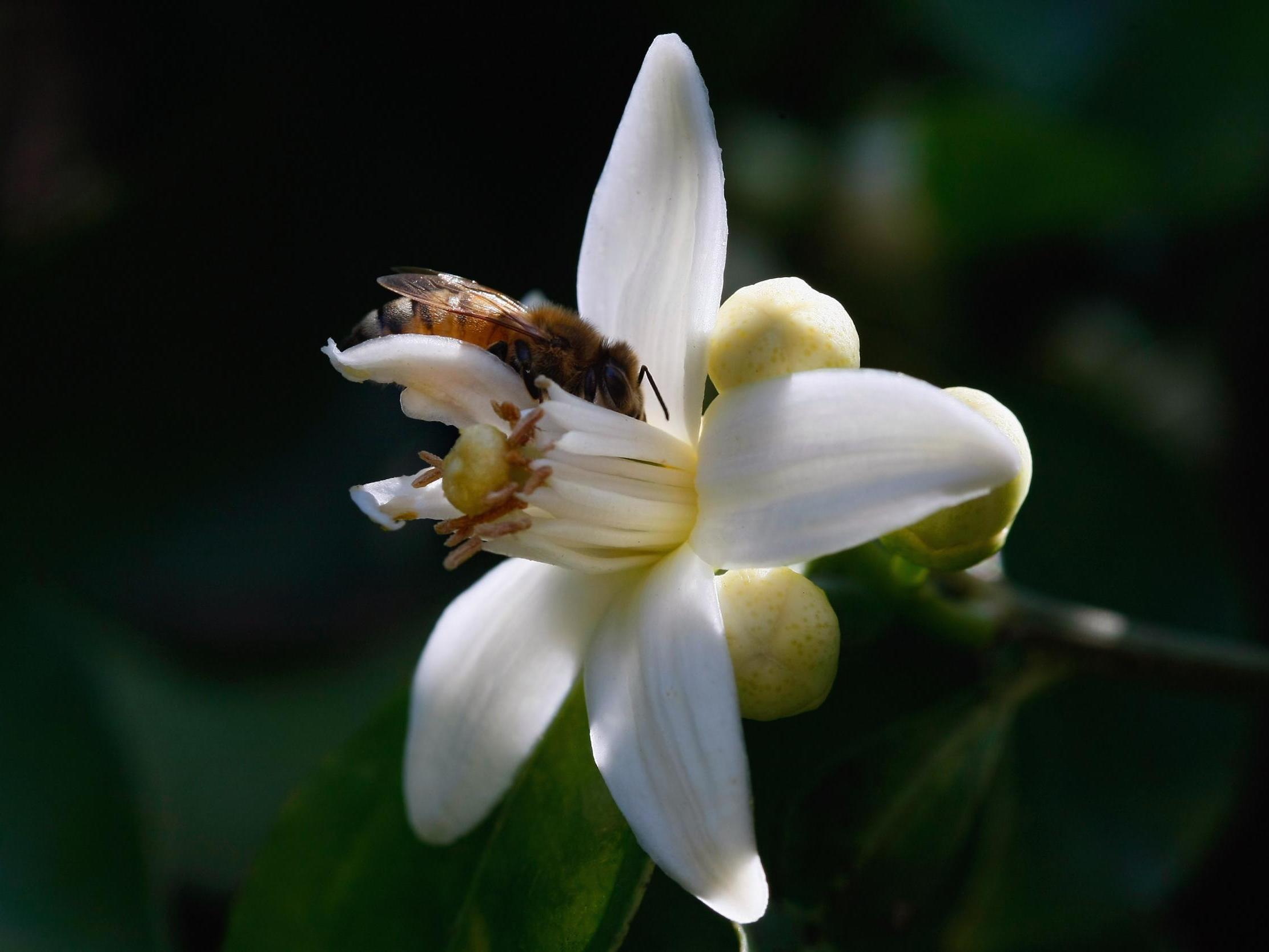Honeybees consume nectar by sucking and not just dipping their tongues, scientists discover
Bee’s tongue is adapted perfectly to lapping syrupy nectars

Your support helps us to tell the story
From reproductive rights to climate change to Big Tech, The Independent is on the ground when the story is developing. Whether it's investigating the financials of Elon Musk's pro-Trump PAC or producing our latest documentary, 'The A Word', which shines a light on the American women fighting for reproductive rights, we know how important it is to parse out the facts from the messaging.
At such a critical moment in US history, we need reporters on the ground. Your donation allows us to keep sending journalists to speak to both sides of the story.
The Independent is trusted by Americans across the entire political spectrum. And unlike many other quality news outlets, we choose not to lock Americans out of our reporting and analysis with paywalls. We believe quality journalism should be available to everyone, paid for by those who can afford it.
Your support makes all the difference.For a century, scientists have known how honeybees drink nectar. They lap it up.
They don’t lap like cats or dogs, videos of whose mesmerising drinking habits have been one of the great rewards of high speed video. But they do dip their hairy tongues rapidly in and out of syrupy nectar to draw it up into their mouth. For the last century or so, scientists have been convinced that this is the only way they drink nectar.
Scientists have now discovered bees can also suck nectar, which is more efficient when the sugar content is lower and the nectar is less viscous. A high speed video of bees drinking a nectar substitute in a lab shows that not only do honeybees have this unexpected ability, they can go back and forth from one drinking mode to another.
Jianing Wu, an engineering and biophysics specialist, at Sun Yat-sen University in Guangzhou, China, and the senior researcher on the experiment, said that while honeybees excel at feeding on highly concentrated nectar, “we find that they can also flexibly switch the feeding strategy from lapping to suction”. He and his colleagues reported the results on Wednesday in the journal Biology Letters.
David Hu, a professor at the Georgia Institute of Technology, who supervised some of Mr Wu’s earlier research but was not involved in this experiment, said: “We thought that insects’ mouths were like tools in your kitchen drawer (straw, fork, spoon), with single uses.”
“Wu showed that honeybee tongues are like a Swiss army knife, able to efficiently drink many type of nectar,” Mr Hu said.
Alejandro Rico-Guevara, who runs the Behavioural Ecophysics Lab at the University of Washington, Seattle, and studies nectar feeding in birds, also worked on the project. He said this flexibility in nectar-drinking behaviour means that although bees prefer the more syrupy nectars, they can efficiently feed from flowers whose nectar is more watery. “This has implications at many different scales, from pollination, for our food, all the way to the role they have in natural ecosystems,” he said.
What Mr Rico-Guevara found most interesting was that the bees are so sensitive to the viscosity of the nectar that “they switch at the exact point you would expect, to get the best reward for the energy invested”.
The honeybee tongue is adapted perfectly to lapping syrupy nectars. Once the tongue is dipped into thick nectars, Mr Wu explained, “approximately 10,000 bristles covering the tongue erect simultaneously at a certain angle for trapping the nectar”. The bee then pulls its tongue back into its proboscis, which is really a part of its mouth, and a pumping mechanism in the head sucks the nectar off the tongue.
When the viscosity changes so that the nectar is less thick, the bees let their tongues stay in the nectar and suck it up into their mouths, apparently using the same pumping mechanism.
Mr Hu said: “The result makes perfect sense because honeybees are already known as generalists.” They are not limited to feeding on only one type of flower like some other species of bee.
The bees have been flexible all along. It was the scientists who were stuck on one idea.
New York Times
Join our commenting forum
Join thought-provoking conversations, follow other Independent readers and see their replies
Comments